
| Component | Description | Manufacturing Process |
|---|---|---|
| Touchscreen Display | Interactive screen for user input and transaction processing. | Integrated into the kiosk frame, calibrated for accuracy and durability. |
| Card Reader | Device for reading debit/credit cards for transactions. | Assembled and securely mounted within the kiosk for easy access. |
| Cash Dispenser | Mechanism for dispensing cash to users after transaction approval. | Precision-engineered and tested for reliability before integration. |
| Receipt Printer | Prints transaction receipts for users. | Installed with high-quality thermal printing components for clarity. |
| Security Camera | Monitors and records kiosk activity for security purposes. | Mounted and connected to the security system during assembly. |
| Network Connectivity | Provides online access for real-time transaction processing and updates. | Networking hardware installed and tested for stable, secure connectivity. |
| Enclosure | Robust outer shell that houses all components and protects them from tampering. | Fabricated from durable materials, assembled, and locked with secure bolts. |
| Power Supply | Ensures the kiosk and all its components receive a stable power source. | Installed with voltage regulation and backup systems for uninterrupted use. |
Kiosk ATM is equipped with advanced hardware and software designed to facilitate secure and efficient transactions. The hardware typically includes a touchscreen display, which serves as the primary interface for users, allowing them to interact with the system easily. Other critical hardware components include a card reader for processing debit and credit cards, a cash dispenser for providing cash withdrawals, a receipt printer for generating transaction records, and security cameras to monitor user activity and ensure safety. The software in a Kiosk ATM is equally sophisticated, encompassing a user-friendly interface, secure transaction processing systems, and real-time connectivity to financial networks. This software is responsible for managing user inputs, verifying credentials, processing transactions, and maintaining secure communication with banking systems. It also includes encryption protocols to protect sensitive data and prevent unauthorized access. Together, the hardware and software create a seamless, reliable, and secure experience for users, ensuring that they can complete their financial transactions quickly and confidently at any time.
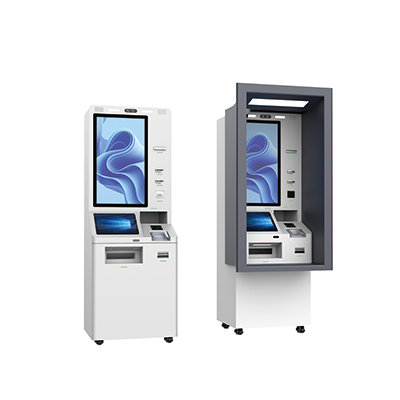
Kiosk ATM works by providing users with a self-service platform for conducting financial transactions, typically in a public or semi-public space. When a user approaches the kiosk, they are greeted by a touchscreen interface that guides them through the process. The first step usually involves inserting a bank card into the card reader, where the ATM reads the card's information. The user is then prompted to enter their Personal Identification Number (PIN) using an on-screen keypad. Once authenticated, the ATM connects to the user’s bank through a secure network to access their account details.
The kiosk ATM's software then allows the user to select from various transaction options, such as withdrawing cash, checking account balances, transferring funds, or depositing money. For a cash withdrawal, the user specifies the amount they wish to withdraw. The system verifies that the account has sufficient funds and then triggers the cash dispenser to release the requested amount. The receipt printer generates a record of the transaction, which the user can collect as proof of the operation.
Throughout the process, security measures like encryption and real-time monitoring are in place to protect the user's sensitive information. Additionally, security cameras integrated into the kiosk ensure a safe environment by deterring potential fraud or theft. This entire operation is automated, allowing users to manage their finances efficiently and securely without the need for bank personnel.
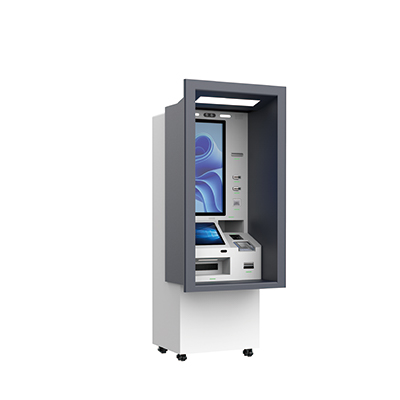
Applications and benefits of a Kiosk ATM
| Applications | Benefits |
|---|---|
| Cash Withdrawals | Convenient access to cash 24/7, reducing the need to visit a bank branch. |
| Account Balance Inquiries | Instant access to account information, helping users manage their finances more effectively. |
| Fund Transfers | Enables users to transfer funds between accounts quickly and securely. |
| Bill Payments | Facilitates the payment of bills directly from the ATM, saving time and effort. |
| Deposits | Allows for the deposit of cash and checks, reducing the need to interact with bank staff. |
| Mobile Phone Top-Ups and Other Services | Provides additional services like mobile phone top-ups, ticket purchases, and more, enhancing user convenience. |
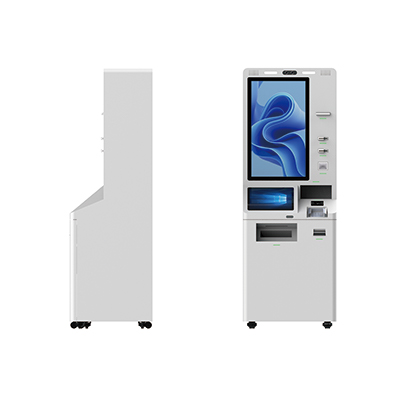
Customization options for Kiosk ATMs are essential for aligning the machine with the specific needs of the deploying organization and the preferences of users. Common customization features include branding elements like logos and color schemes to match the company's identity. Touchscreen interfaces can be tailored to offer a user-friendly experience, with customized software to support various functions such as multi-language options, accessibility features for differently-abled users, and specific transaction types. Security features can also be enhanced based on the location, including advanced biometric authentication, encrypted communication, and high-definition surveillance cameras. Additionally, the physical design of the kiosk can be adapted to fit different environments, whether it's a compact version for space-constrained areas or a robust, weather-resistant model for outdoor settings.
When purchasing a Kiosk ATM, several considerations are vital. First, the machine's compliance with banking regulations and security standards is crucial. Buyers should ensure that the kiosk offers strong security features to protect against fraud and unauthorized access. Another consideration is the ease of integration with existing banking systems, ensuring that the kiosk can seamlessly process transactions. It's also important to assess the total cost of ownership, including initial investment, maintenance, and potential software updates. Lastly, choosing a reliable manufacturer with a track record of delivering high-quality, durable kiosks and offering ongoing technical support is essential to ensure long-term functionality and customer satisfaction.
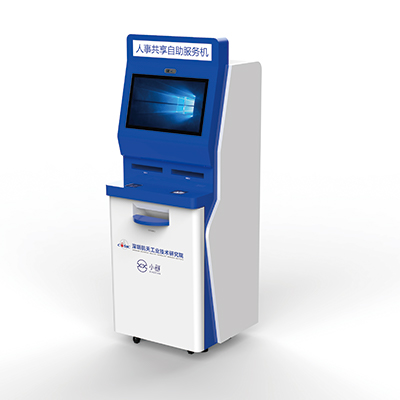
The cost of a Kiosk ATM varies depending on factors such as design complexity, customization options, security features, and the manufacturer. Typically, the initial investment includes hardware, software, installation, and integration with existing banking systems. High-end models with advanced security and transaction capabilities tend to be more expensive. In addition to the upfront costs, ongoing expenses such as maintenance, software updates, and potential repairs must be considered. However, these costs can be offset by the machine’s ability to operate 24/7, reducing the need for physical branches and lowering labor costs.
The return on investment (ROI) for a Kiosk ATM can be significant over time. By offering self-service capabilities, banks and financial institutions can enhance customer convenience and reduce wait times, leading to higher customer satisfaction and retention. The ability to deploy kiosks in various locations, including remote or underserved areas, can increase the institution’s reach and accessibility, potentially attracting new customers. Additionally, the reduction in operational costs, combined with the revenue generated from transaction fees and increased customer engagement, contributes to a positive ROI, making Kiosk ATMs a valuable investment for financial institutions looking to optimize their services and expand their reach.
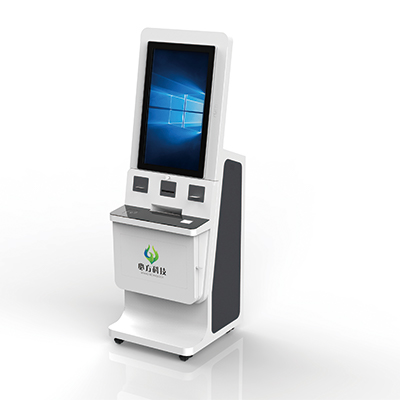
| Type | Size | Design Features | Price Range |
|---|---|---|---|
| Standard ATM | Compact to Medium | Basic functionality, touch screen | $2,000 - $5,000 |
| Outdoor ATM | Medium to Large | Weatherproof, enhanced security | $4,000 - $8,000 |
| Multi-Function ATM | Medium to Large | Cash withdrawal, deposits, bill payments | $6,000 - $12,000 |
| Interactive ATM | Medium to Large | Advanced features, multimedia | $8,000 - $15,000 |
| High-Traffic ATM | Large | High durability, large cash capacity | $10,000 - $20,000 |
Define Requirements: Determine the features you need, such as cash dispensing, deposit capabilities, or interactive functions. Consider the size and design that fit your location and usage volume.
Research Manufacturers: Look for reputable ATM manufacturers with a track record of reliability and customer support. Check reviews and case studies to gauge their product quality.
Compare Models: Evaluate different models based on functionality, size, design, and price. Ensure the models meet your requirements and offer the features you need.
Check Security Features: Ensure the ATM has robust security features, including encryption, fraud detection, and physical security measures to protect against theft and tampering.
Consider Maintenance and Support: Choose a manufacturer that offers comprehensive maintenance and support services. Ensure they provide regular software updates and responsive customer service.
Review Total Cost of Ownership: Calculate the total cost, including initial purchase, installation, maintenance, and transaction fees. Assess the long-term ROI to ensure it aligns with your budget and financial goals.
Request a Demonstration: If possible, request a demo of the ATM machine to test its functionality and ensure it meets your expectations before making a purchase
What did our happy clients say?
Absolutely thrilled with our new kiosk ATM! It’s reliable, user-friendly, and has significantly boosted our customer satisfaction. The installation was seamless, and the support team has been fantastic. Highly recommend the kisok manufacturer of Lean Kiosk System!
The kiosk ATM machine we purchased has exceeded our expectations. It’s robust, secure, and easy for customers to use. The custom features and excellent support have made a big difference in our operations. Great investment for our business!
We are very pleased with our new ATM machine. It integrates perfectly with our existing systems and has proven to be very durable. The quality of the product and the professional service provided were top-notch!
Our experience with this kiosk ATM has been fantastic. The machine works flawlessly, and the features are exactly what we needed. The customer service has been outstanding, making the entire process smooth and efficient. Highly satisfied!